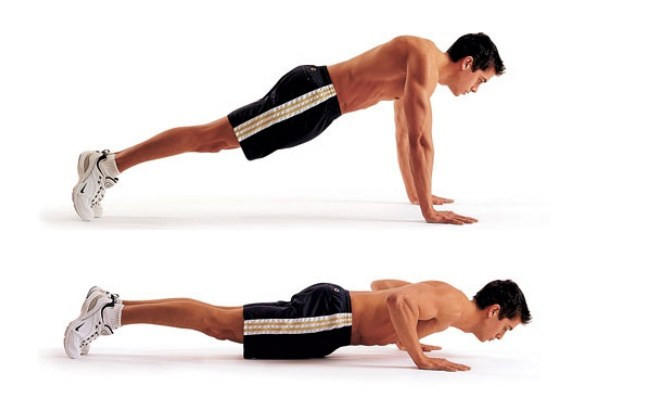SOME CONSIDERATIONS
Harvard Health recognizes that we have different goals for exercise. These are:
1. For work – Energy for manufacturing and agriculture is not nearly as dependent on human muscle power as in the past couple of centuries. We have tractors instead of hoes and escalators instead of stairs. There are still jobs that require physical strength and endurance, but these are lessening. Of course, professional athletes need to be in great shape.
2. For health – We should get at least 30 minutes per day of moderate exercise or 15 minutes of vigorous exercise at a minimum. We can protect against heart attack, stroke, high blood pressure, diabetes, obesity, osteoarthritis, depression, dementia and cancers (colon and breast cancers).
3. For recreation – Dissipate stress, lift your spirits, have fun!
4. For competition – Many of us participate in amateur sports activities well past our younger days. We like to perform well. It is important to strive for aerobic fitness by getting our heart rate to 70-85% of its maximum and to keep it there for 20-60 minutes.
5. For a better appearance – We can build our muscles so as to more efficiently burn calories and to become thinner and more attractive. We need to understand that we cannot selectively remove fat from a particular place. We lose it all over.
It is important to get a medical check-up before starting a new exercise program, especially in our senior years. Also, we have different abilities, schedules and budgets – as well as different goals.

STRENGTH TRAINING
The Center for Disease Control and Prevention suggests that we should work out all major muscle groups at least 2 days per week. This is in addition to 150 minutes of moderate aerobic activity or 75 minutes of vigorous such activity per week. To work out “all muscle groups” is quite a challenge. For this reason, our workouts need to be broken down into manageable time periods.
There are several distinct ways to do this. I have tried most of these. Here are a couple:
- Work the entire body 3 days per week. Bodybuilder Steve Reeves did this. Each workout would be for about 3 hours. Steve would add lengthy walking to his program. He was “Hercules” of the movies and was not a typical weight trainer. Other less motivated people might also cover upper body, legs and core on the same day. I did this as a teenager and also went to 3.5 days per week by simply working every other day.
- Work upper body one day, legs the next. This gives us the advantage of being able to work more extensively on each half of our bodies.
Bear in mind that muscles and thereby strength grow only with rest, not during the time that we break down muscle fiber by resistance training. Working the same muscles on consecutive days is generally not recommended. Here are a few more:
- Work for strength training one day, cardio the next. This assures a complete fitness routine.
- Work the pushing muscles one day, the pulling muscles the next. Chest and triceps muscles one day – back and biceps the next. Maybe chest / triceps Monday and Thursday, back / biceps Tuesday and Friday.
- Work only one muscle group per day. Chest day, back day, leg day, shoulders day, arms day, core day, rest day. Some versions of this are becoming quite popular now. Also, a couple of muscle groups may be combined, with more rest added in. For example – back and chest, then rest, legs and core, then rest, shoulders and arms, then rest for 2 days.
Our needs and capabilities are always part of the equation. In my case, I can’t do upper leg movements because of arthritic knees. I do upper body one day, core / calves / neck the next. It also makes good sense to target whatever body part needs the most improvement by doing the appropriate exercise for those areas first (while we are fresher) and with more sets and reps.

RESOURCES
Amazon is a dependable and comprehensive source for workout equipment and advice. As an Amazon affiliate, I may earn from qualifying purchases. You can click on a link for information and then scroll around from that link as needed. Here are some relevant items:
- Resistance bands
- Push – up board
- Small dumbbells with stand
- Adjustable dumbbells
- Back support brace
- Crunch roller – protect your back while doing crunches
- 90 day workout program
Dick’s Sporting Goods is my favorite source for sports equipment, especially cardio devices – treadmills, etc. (now deeply discounted)
Bullworker products offer isotonic and isometric tools that are easily transportable and highly effective
FitTrack provides the Dara scale for monitoring 17 internal health metrics by simply stepping on the scale
GOLI apple cider vinegar gummies help us suppress our appetites
CONCLUDING
The best workout routines are the ones that maximize our strength and cardio efforts while also providing the necessary rest time to allow us to grow.
How often we work out and the time we spend in doing so depend upon our personal circumstances. But it is important to remember that fitness and good health are worthy of serious priority. We may often find excuses to forego our workouts, since it is tempting to “take it easy”. Please realize that 30 minutes per day of exercise only represents .0208 % of a day, leaving us almost 98% of the rest of our day for other pursuits.
My personal schedule is to do a 30-minute workout every morning before breakfast.
Please choose a lifestyle of fitness and health, You will never regret that choice!
Leave me any comments or questions in the “Comments” section below. Or email me, richard@myworkoutathome.com.
Be well and stay safe!
